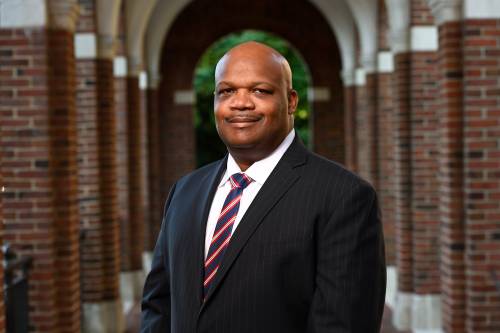My first month at Johns Hopkins
October 13, 2021

Dear Johns Hopkins Community,
It has been an eventful month since I had the pleasure of becoming the new vice president for public safety at Johns Hopkins University and Johns Hopkins Medicine. I have gotten to meet enough of you to already have an appreciation for how much I still have to learn about this extraordinary community, and I intend to do a great deal of listening and learning over the coming months as we work together to develop a model public safety strategy for our institution.
For those I haven’t met yet, I offer a few words of introduction. I was born and raised in Southwest Philly, a place not too different from Baltimore, as one of six kids. Policing in that time and that place—and the policing that I witnessed firsthand—was often conducted at the end of a nightstick. Those early experiences served as a model to me for what policing should not be. Coming up, I saw the criminal justice system from both sides—the year I became a police officer was the same year my brother went to prison for life. Throughout my career, those experiences have guided me in the belief that everyone deserves to feel safe and that nobody should feel unsafe because of the police.
I spent 21 years in the Philadelphia Police Department, rising within a few years to become captain of one of the most troubled districts in the city, a place with both serious crime problems and deep mistrust of the police. I insisted that no mistreatment of the public would ever be tolerated, and I led our engagement efforts by example, establishing myself as the most visible person in the community. When we fully engaged on a sustained basis, the community followed suit, resulting not only in enhanced trust but also much lower rates of crime.
Most recently, I had the opportunity to serve as police commissioner in Cambridge, Mass., a city with six colleges and universities and three hospitals in 6.4 square miles. There, I was able to enact policies and initiatives that reflect my belief that most individuals encountered by the police, even when criminal statutes are violated, are best served utilizing a social justice approach rather than by more punitive approaches associated with the traditional criminal justice system. I created the department’s Family and Social Justice Section to better serve juveniles, the homeless, elderly citizens, and those suffering from mental health or substance abuse issues. I hired and onboarded a child psychologist to run SafetyNet Collaborative to provide wrap-around services to young people and their families, and established the Procedural Justice Section to monitor for racial profiling and racially biased policing.
Throughout my career, some of my most important relationships have been with those who are critical of the police. Indeed, I have found that often those who harbor the strongest objections to policing have the potential to be the most instructive in our growth and improvement.
I was excited about the opportunity to take on this role at Johns Hopkins because of the institution’s comprehensive vision for public safety, one that reflects the truth I have long understood: There is far more to public safety than police or security officers; they are just one element of our broader public safety strategy. Johns Hopkins pairs innovative approaches like the Behavioral Health Crisis Support Team with a commitment to accountability, transparency, and progressive policies and training for its more traditional public safety functions, and during my introductory meetings with people throughout the institution, I have been energized by the universal conviction that Johns Hopkins Public Safety should make everyone—everyone—feel safe.
I look forward to the opportunity to hear from many, many more members of this community as I seek to understand the best ways to make that vision a reality. In the weeks ahead, I will be meeting with our neighbors, students, staff, and faculty organizations and affinity groups, as well as those focused specifically on public safety, such as the Student Public Safety Advisory Committee and the Johns Hopkins University Police Accountability Board, whose members can provide me with valuable insights even as we respect the two-year pause in the development of the eventual JHPD.
As I go through that process, I plan to share regularly on the Public Safety website what I’m observing. Please check back to find out what I’m learning and how I’m approaching the great responsibility of ensuring the safety of the Johns Hopkins community.
Sincerely,
Branville
Branville G. Bard, Jr.
Vice President for Public Safety
Johns Hopkins University and Medicine





